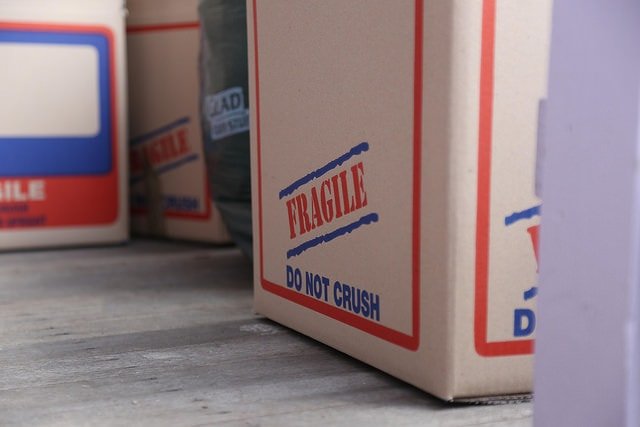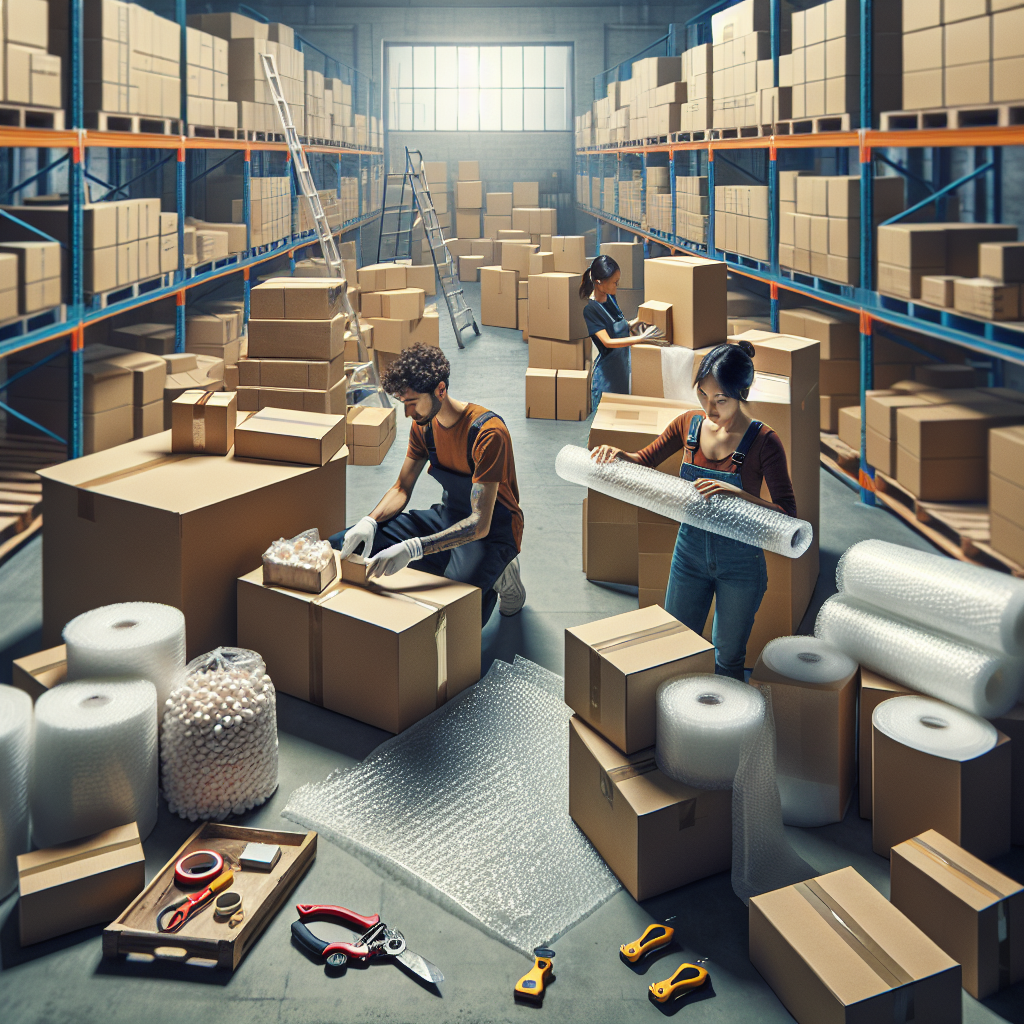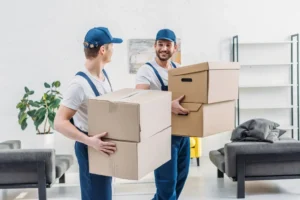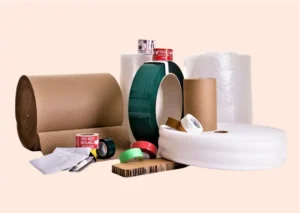Table of Contents

Key Takeaways
-
Understand the variety of moving box sizes and their specific uses for efficient packing.
-
Learn about the different types of moving boxes, including specialty options, to protect your belongings.
-
Estimate the right quantity of boxes needed to avoid unnecessary costs and waste.
-
Discover eco-friendly options for moving boxes to minimize your environmental impact.
-
Get tips on where to find the best deals on moving boxes and how to prepare for your move.
Mastering the Art of Selecting Moving Boxes
Let’s face it, moving can be a daunting task. But with the right tools and a bit of know-how, it can also be a breeze. One of the most critical steps in the moving process is choosing the right boxes. It might seem trivial, but the right box can mean the difference between your cherished items arriving in one piece or not. So, let’s dive in and make sure you’re equipped to pick the best moving boxes for your needs.
Sizing Up Your Needs
Before you even think about purchasing boxes, you need to assess what you’ll be packing. Start by categorizing your items based on size and fragility. Books, for instance, might be small, but they’re also heavy, so they’ll need a sturdy box. On the other hand, your delicate china requires a box that can be padded for extra protection.
Here’s a quick guide to get you started:
-
Small Boxes: Ideal for heavy items like books, DVDs, and canned goods.
-
Medium Boxes: Great for toys, kitchenware, and small appliances.
-
Large Boxes: Best for bulky, lightweight items such as linens and pillows.
Remember, the goal is to make each box manageable to lift – a back injury is the last thing you need on moving day.
Box Types to Protect Your Belongings
Different belongings require different types of protection during the move. That’s where specialized boxes come into play. For example, wardrobe boxes with built-in hanging rods keep your clothes wrinkle-free, while dish pack boxes come with dividers to protect your fine china.

Quantity Counts: Estimating Your Needs
It’s easy to underestimate the number of boxes you’ll need, and a last-minute dash to the store is a hassle you don’t need. A good rule of thumb is to have more boxes than you think you’ll require. Consider the size of your home and how full it is, then add on an extra 10-15% just to be safe.
For a standard three-bedroom house, you might start with: moving boxes
-
10-15 Small Boxes
-
10-12 Medium Boxes
-
5-8 Large Boxes
-
Plus a few specialty boxes for items like TVs or artwork.
Eco-Friendly Packing Solutions
Choosing eco-friendly moving boxes isn’t just good for the planet – it can be good for your wallet too. Look for boxes made from recycled materials, and consider renting plastic bins that can be returned and reused. After the move, make sure to recycle your cardboard boxes or pass them on to someone else who can use them.
Now, with these key takeaways in mind, let’s delve deeper into the specifics of choosing the right moving boxes for your move.
Wardrobe Boxes: Keep Clothes Wrinkle-Free
When it comes to moving your clothes, you want to avoid arriving at your new home only to find a closet full of wrinkled garments. Wardrobe boxes are the perfect solution for this. These tall boxes come with a metal hanging bar across the top, allowing you to transfer clothes directly from your closet to the box, hangers and all. They’re like portable closets that make unpacking a breeze. Just hang and go!
Dish Pack Boxes: Ensuring Safe Dishes Arrival
There’s nothing more heartbreaking than hearing the clink of broken dishes when you start to unpack. Dish pack boxes are designed with this in mind, featuring double-walled construction for extra protection. They often come with cardboard dividers that keep your plates, bowls, and glasses from knocking into each other. Wrap each item in packing paper or bubble wrap, place them in the compartments, and your dishes are much more likely to survive the journey intact.
Electronics Boxes: Your Tech’s Best Friend
Electronics are not only expensive but also sensitive to jostling and extreme temperatures. Electronics boxes, sometimes custom-fitted to your devices, offer the best protection. They often come with foam inserts that snugly surround your electronics, keeping them secure. If you can’t find electronics boxes, you can still protect your gadgets by padding a standard box with plenty of cushioning material and securing the box tightly so nothing moves inside.

Customizable Packing: When Standard Sizes Don’t Cut It
Every home is unique, and sometimes you’ll have items that just don’t fit into standard boxes. Customizable packing solutions are available for these tricky items. Some companies offer boxes that can be adjusted to various shapes and sizes, or you can even order boxes specifically designed to fit your items. This ensures that everything from your floor lamp to your snowboard has the perfect-sized box.
Custom Boxes: Crafting the Right Fit
For those items that are unusually sized or extra valuable, custom boxes are the way to go. Whether it’s a piece of art, a musical instrument, or a family heirloom, a box that’s tailored to the item’s dimensions provides the best protection. You can find suppliers that will take your item’s measurements and create a box that’s just the right fit.
DIY Box Adjustments: Tailor-Made Solutions
If custom boxes aren’t in your budget, don’t worry. You can make your own adjustments to standard boxes. Cut down the corners and fold the flaps to accommodate longer items, or combine two boxes to create a larger one. With a little bit of tape and some creativity, you can transform standard boxes to suit your needs.
Packing Hacks: Maximizing Box Utilization
Packing efficiently means making the most of each box. Start with heavier items at the bottom and lighter ones on top, and fill any gaps with packing peanuts or crumpled paper to prevent shifting. Remember to label each box clearly with its contents and the room it’s destined for. This not only helps with organization but also ensures that fragile items are handled with care.
Finding the Best Deals on Moving Boxes
Finding affordable moving boxes can be as easy as a trip to your local grocery store or a quick online search. Many stores set aside boxes that are sturdy and clean – perfect for moving. Just be sure to ask for boxes that haven’t been used to store food, as they might attract pests or have lingering smells. You can also check out community groups or online marketplaces for people giving away boxes after their own moves.

Scoring Budget-Friendly Packing Supplies
Here’s a little secret: you don’t always have to buy new boxes. Look for moving companies that offer used boxes at a discount, or ask friends and family if they have any spares. Just make sure the boxes are still in good shape – no tears, damp spots, or weak corners. Saving on boxes means you can splurge on other packing supplies, like bubble wrap or specialty tape.
Navigating Shipping Costs and Box Bundles
If you’re buying boxes online, shipping costs can add up quickly. To save money, look for retailers that offer free shipping on large orders or bundle deals. Some moving companies also offer package deals that include a variety of box sizes and packing materials at a discounted rate. It’s all about finding the best value for your money.
The Local Loop: Where to Find Boxes Near You
For those who prefer to shop locally, hardware stores and moving supply shops usually have a good selection of boxes. You can also find specialized boxes for items like mirrors or mattresses. Local shops may also allow you to purchase single boxes rather than in bulk, which is great if you only need a few more to complete your packing.
When it comes to moving, remember that the right box can make all the difference. Choosing the right size and type of box for each item ensures that your belongings arrive safely at your new home. And when you’re ready to start packing, don’t forget to Contact Us for all your box needs. We have a wide variety of moving boxes and packing supplies to make your move as stress-free as possible.
-
Local grocery stores often have free, sturdy boxes.
-
Online marketplaces can be a source of discounted or free used boxes.
-
Buying in bulk or bundle deals online can save on shipping costs.
-
Local hardware stores and moving supply shops offer specialized boxes and the option to buy single boxes.
Online Ordering: Convenience at a Click
In today’s digital age, convenience is key. Online retailers offer a vast selection of moving boxes and supplies with the added benefit of direct-to-your-door delivery. This can be a game-changer if you’re short on time or don’t have a way to transport a large number of boxes. Plus, you can often find reviews to ensure you’re getting quality supplies.
And if you’re unsure about what you need, our team is here to help. With just a few clicks, you can get personalized recommendations and have your moving boxes delivered right to your doorstep. Just head over to our Contact Us page and let us know what you’re looking for. We’re here to make your move as smooth as possible.
Prepping for the move is more than just throwing your belongings into boxes. It’s about ensuring everything arrives safely and is easy to unpack. Labeling each box with its contents and the room it’s destined for is not just for organization; it’s for the care of your items too.
Now, let’s talk about the heavy lifters of your packing supplies – the boxes themselves. You’ve got your standard moving boxes, your heavy-duty options for those extra precious items, and then you’ve got boxes for all the odd-shaped or fragile pieces.

Recycling Your Moving Boxes: Do’s and Don’ts
After the move, what do you do with all those boxes? Recycling is key. Flatten them out and remove any tape or labels. Most curbside recycling programs will take them, but check your local guidelines to be sure. And remember, if they’re in good shape, you can always offer them up to the next person on the move.
Let’s not forget, though, that not all boxes might be suitable for recycling. If they’ve come into contact with food, oil, or anything that might contaminate the recycling process, it’s best to leave them out.
Recycling is great, but reusing is even better. If your boxes are still in good nick, consider keeping them for future storage or moves. Or, why not pass them on? There’s always someone out there who could use a few good boxes.
Reusing Boxes: A Sustainable Choice
Reusing moving boxes is a fantastic way to cut down on waste. If you’ve rented plastic bins, simply return them when you’re done. Cardboard boxes can be broken down and stored for future use, or given to friends and family.
Donation Drop-offs: Giving Boxes a Second Life
Many charities and thrift stores will gladly take your used moving boxes to help others move. This way, your boxes get a second life, and you help someone in need. It’s a win-win!
Ready to Move? Connect with Us for Your Packing Needs
Choosing the right moving boxes is just the start of your journey. When you’re ready to pack, we’re here to provide you with high-quality boxes that will ensure a stress-free move. Our selection of sizes and specialized boxes means you’ll find exactly what you need for every item in your home.
Quality Boxes for a Stress-Free Move
Our boxes are designed to protect your belongings and make your move as smooth as possible. With our sturdy construction and variety of sizes, you can rest assured that your items will arrive safely.
Expert Advice Just a Click Away
If you need some guidance on which boxes will suit your move best, our team is here to help. We can provide personalized advice to make sure you have the right supplies for your specific situation. All it takes is a simple click to Contact Us, and we’ll take it from there.
Frequently Asked Questions
How Do I Choose the Right Size Boxes for My Move?
Think about the weight and fragility of the items you’re packing. Heavy items like books should go in small boxes, while lighter items like linens can go in larger ones. And remember, the right box size prevents damage and makes carrying easier.
Can I Reuse Old Moving Boxes?
Absolutely! As long as they’re still sturdy and haven’t been damaged by water or pests, you can reuse old moving boxes. Just give them a check for any wear and tear before you start packing.
What’s the Best Way to Pack Fragile Items?
For fragile items, use sturdy boxes and lots of padding. Wrap each item individually, and fill any gaps in the box with bubble wrap or packing peanuts. Make sure nothing is rattling around inside the box before you seal it up.
-
Wrap each fragile item separately.
-
Choose a sturdy box that’s the right size.
-
Fill gaps with padding to prevent movement.
Where Can I Find Eco-Friendly Moving Boxes?
Look for boxes made from recycled materials, or consider renting plastic bins that can be reused. Many moving companies now offer eco-friendly options, and you can also find them online.

How Far in Advance Should I Order My Moving Boxes?
It’s best to order your moving boxes at least a few weeks in advance. This gives you plenty of time to pack at your own pace and ensure you have all the supplies you need. Plus, if you find you need more boxes, you’ll have time to order additional supplies.
With the right preparation and supplies, your move can be a smooth and even enjoyable process. Remember, we’re just a click away to help you with all your moving box needs. So when you’re ready, Contact Us and let’s get packing!
When planning a move, one of the essential supplies you’ll need is moving boxes. But not all boxes are created equal. There are various sizes and types of boxes that you can use for different items. Small boxes are typically used for books and heavy items, while larger boxes are better for lighter, bulkier items like linens and pillows. Specialized boxes like wardrobe boxes or dish packs are also available for specific needs. Understanding what sizes and types of boxes you need can help make your move more organized and efficient.



